|
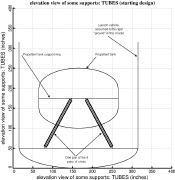 |
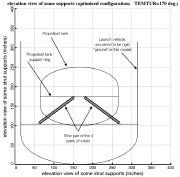 |
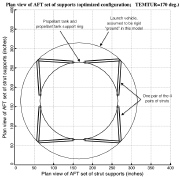 |
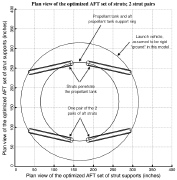 |
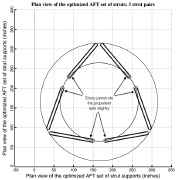 |
|
| Example 9, Slide 9: Starting design of a short propellant tank with one set of supporting struts, called "aft" |
|
| Example 9, Slide 10: Optimized design of a short propellant tank with one set of supporting struts, called "aft" |
|
| Example 9, Slide 11: Plan view of the one set of strut supports for the optimized design of the short propellant tank with 4 pairs of struts attached |
|
| Example 9, Slide 12: Plan view of the AFT set of 2 pairs of strut supports for the optimized design of the long propellant tank with aft & forward set |
|
| Example 9, Slide 13: Plan view of the AFT set of 3 pairs of strut supports for the optimized design of the long propellant tank with aft & forward set |
|
|
|
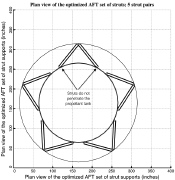 |
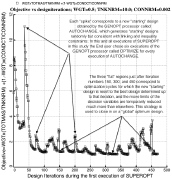 |
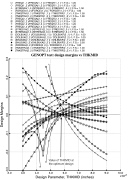 |
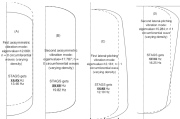 |
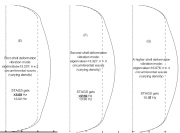 |
|
| Example 9, Slide 14: Plan view of the AFT set of 8 pairs of strut supports for the optimized design of the long propellant tank with aft & forward set |
|
| Example 9, Slide 15: Optimization via the GENOPT processor called "SUPEROPT". Objective versus design iterations |
|
| Example 9, Slide 16: Design sensitivity of the optimized long propellant tank with aft and forward struts, 4 strut pairs in each set of struts |
|
| Example 9, Slide 17: Modal vibrations of the optimized strut-supported long propellant tank in which most of the energy is in the strut extension and |
|
| Example 9, Slide 18: Modal vibrations of the optimized strut-supported long propellant tank in which most of the energy is in shell deformation |
|
|
|
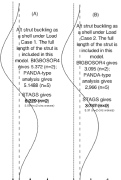 |
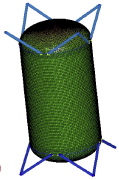 |
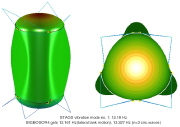 |
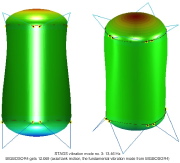 |
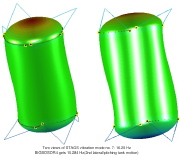 |
|
| Example 9, Slide 19: Buckling modes and load factors of the most critical aft strut under (A) Load Case 1 and (B) Load Case 2 |
|
| Example 9, Slide 20: STAGS finite element model of the optimized long propellant tank with aft and forward sets of struts, 4 pairs in each set |
|
| Example 9, Slide 21: The lowest vibration mode from the STAGS model of the long tank with aft and forward "rings" of struts |
|
| Example 9, Slide 22: Two views of the third vibration mode from the STAGS model. |
|
| Example 9, Slide 23: Two views of the seventh vibration mode from the STAGS model. |
|
|